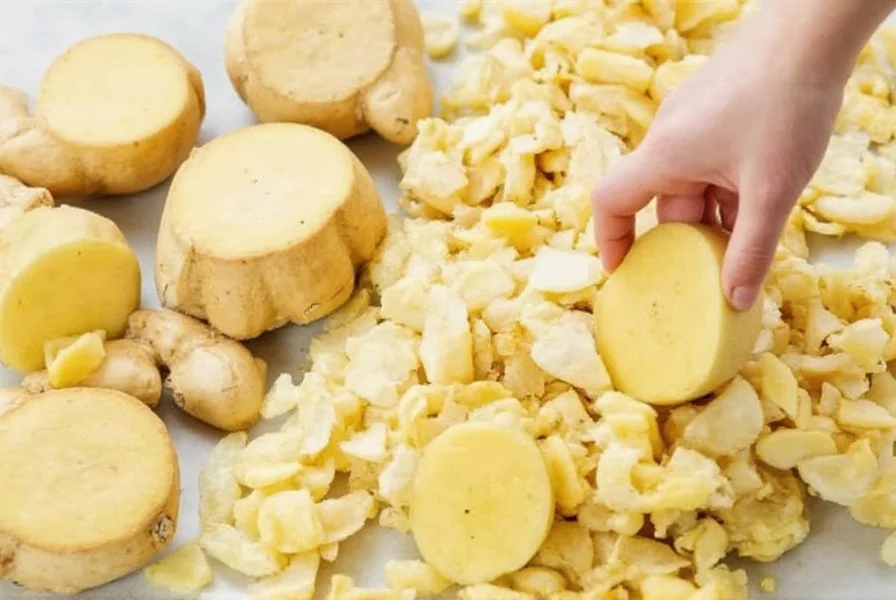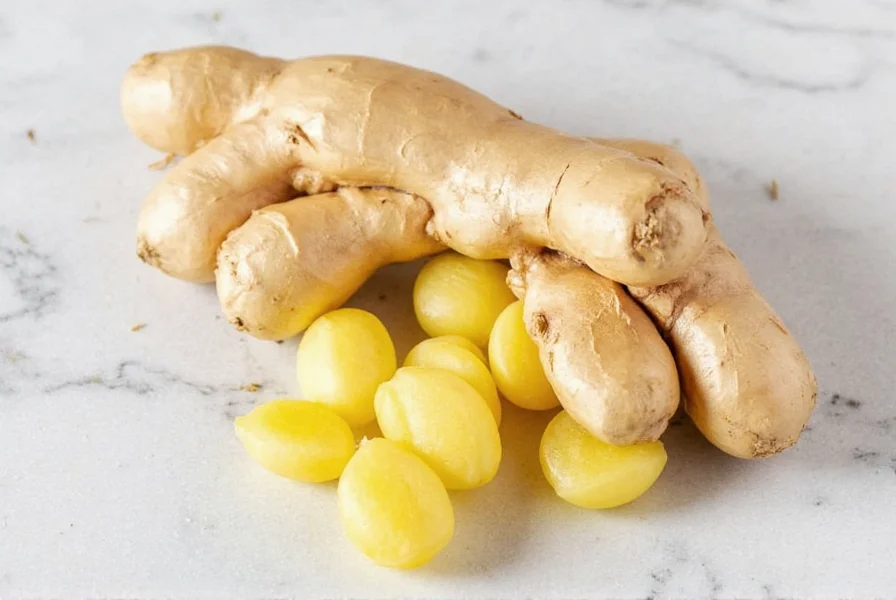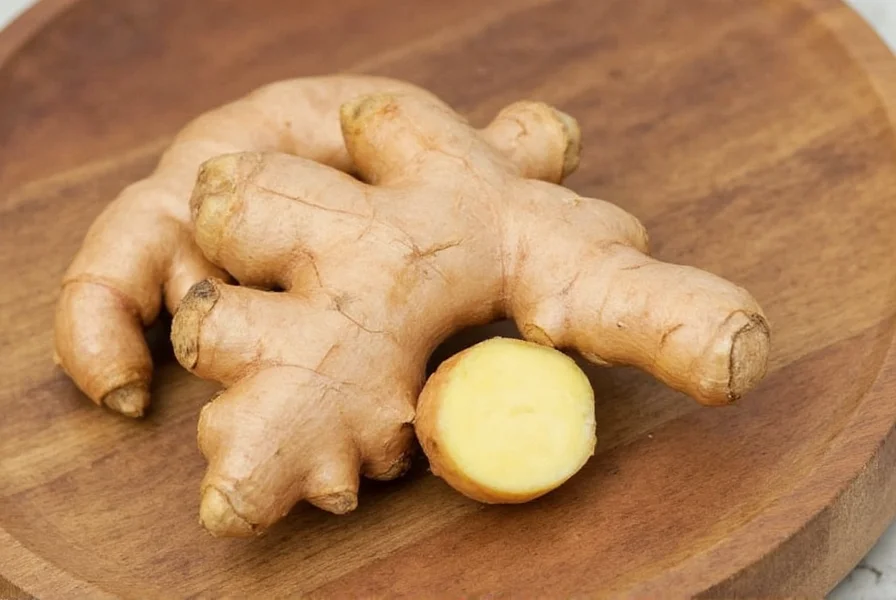Proper ginger root preservation is essential for home cooks and culinary enthusiasts who want to maintain this versatile ingredient's pungent flavor and medicinal properties. Whether you've bought a large quantity on sale or simply want to reduce food waste, understanding how to store fresh ginger root in refrigerator conditions versus long-term solutions can dramatically extend its shelf life while preserving quality.
Understanding Ginger's Storage Requirements
Ginger root (Zingiber officinale) contains high moisture content that makes it susceptible to mold and drying out. The rhizome's natural oils and compounds begin degrading when exposed to improper conditions. Successful keeping ginger root strategies balance humidity control with adequate ventilation.
Short-Term Storage: 1-3 Weeks
For immediate use within a few weeks, refrigeration provides the ideal environment:
- Whole ginger method: Place unpeeled ginger in an airtight container with a slightly damp paper towel. Store in the vegetable crisper drawer.
- Vacuum sealing: Removes excess air that accelerates oxidation and moisture loss.
- Water storage: Submerge whole ginger in water in a sealed container, changing water every 2-3 days.
This approach works well for how to keep ginger from molding during typical usage periods. Check weekly for any soft spots or mold development.

Medium-Term Storage: 3-8 Weeks
When you need ginger to remain usable for a month or more, consider these enhanced preservation techniques:
| Method | Duration | Preparation | Best For |
|---|---|---|---|
| Refrigerator in sand | 4-6 weeks | Bury in slightly damp sand in airtight container | Preserving whole root integrity |
| Aluminum foil wrap | 3-4 weeks | Wrap tightly in foil, store in crisper | Preventing moisture loss |
| Wax paper storage | 3-5 weeks | Wrap in wax paper, place in container | Balancing moisture and airflow |
These methods address common problems with preserving ginger root for cooking by creating micro-environments that maintain optimal humidity levels while allowing minimal gas exchange.
Long-Term Storage: Months to Year
For extended preservation beyond two months, freezing or alcohol-based methods prove most effective:
Freezing Ginger Root
How to freeze ginger root properly involves these critical steps:
- Peel and chop ginger into 1-inch chunks or grate completely
- Spread pieces on parchment-lined tray, freeze until solid (2 hours)
- Transfer to airtight freezer bags, removing excess air
- Label with date and return immediately to freezer
Pro tip: Freeze ginger in ice cube trays with water or oil for ready-to-use portions in cooking. Frozen ginger can be grated directly without thawing, preserving texture and flavor compounds better than thawed ginger.
Alcohol Preservation Method
Storing peeled ginger chunks in vodka or sherry creates an antimicrobial environment that prevents spoilage while maintaining flavor:
- Use 80-100 proof alcohol for optimal preservation
- Store in dark glass container away from light
- Alcohol absorbs ginger's essential oils, creating flavorful infusions
- Lasts 6+ months with proper storage conditions

Identifying Spoiled Ginger
Knowing when ginger has gone bad prevents food waste and potential illness. Discard ginger showing these signs:
- Mold growth: Any visible fuzzy spots (white, green, or black)
- Texture changes: Excessive softness or slimy feel
- Odor issues: Sour or fermented smell instead of spicy aroma
- Color deterioration: Darkened flesh or grayish discoloration
Slightly wrinkled ginger with firm texture remains usable—simply trim affected areas. This knowledge helps implement effective long term storage methods for ginger root while minimizing waste.
Common Storage Mistakes to Avoid
Many home cooks unknowingly shorten ginger's shelf life through these errors:
- Storing at room temperature for extended periods
- Washing ginger before storage (adds excess moisture)
- Keeping in plastic bags without ventilation
- Storing near ethylene-producing fruits like apples or bananas
- Peeling ginger before long-term storage
Understanding these pitfalls improves your success with keeping ginger root fresh regardless of your chosen preservation method.
Special Considerations for Different Ginger Types
While standard yellow ginger follows these guidelines, specialty varieties require slight adjustments:
- Blue Hawaiian ginger: More delicate, best used within 2 weeks even when refrigerated
- Baby ginger: Higher moisture content, requires immediate refrigeration in damp paper towel
- Black ginger: More resistant to mold, can be stored longer using standard methods
Using Stored Ginger Effectively
Properly stored ginger maintains most of its culinary properties. When using preserved ginger:
- Thaw frozen ginger slightly before slicing for cleaner cuts
- Use alcohol-preserved ginger in marinades or sauces where flavor infusion is beneficial
- Refrigerated ginger may require brief soaking if slightly dried
- Always remove any discolored portions before use
These techniques ensure you maximize the benefits of your preserving ginger root for cooking efforts while maintaining optimal flavor and texture in your dishes.
Frequently Asked Questions
Can I store ginger root in the pantry?
Whole, unpeeled ginger can last 1-2 weeks in a cool, dark pantry, but refrigeration significantly extends freshness. Pantry storage works only in cool, dry environments below 70°F (21°C) and increases risk of sprouting or drying out compared to refrigerated methods.
Should I wash ginger before storing it?
No, washing adds moisture that promotes mold growth. Store ginger dry and clean it only when ready to use. If purchased dirty, gently brush off soil but avoid wetting the root before storage.
Can I freeze ginger with the skin on?
Yes, freezing ginger with skin intact preserves more flavor compounds. Peel after thawing or grate directly through the skin. For immediate cooking use, peeling before freezing saves preparation time later.
How do I revive dried-out ginger?
Soak dried ginger in cold water for 15-30 minutes to restore some moisture. While it won't regain original texture, this makes it easier to slice or grate. Severely dried ginger works best grated directly into dishes where texture matters less.
Does storing ginger in vinegar affect flavor?
Yes, vinegar preservation creates a slightly tangy flavor profile that works well in Asian cuisine but may not suit all recipes. For neutral flavor preservation, vodka or sherry provide better results while still preventing spoilage.











 浙公网安备
33010002000092号
浙公网安备
33010002000092号 浙B2-20120091-4
浙B2-20120091-4